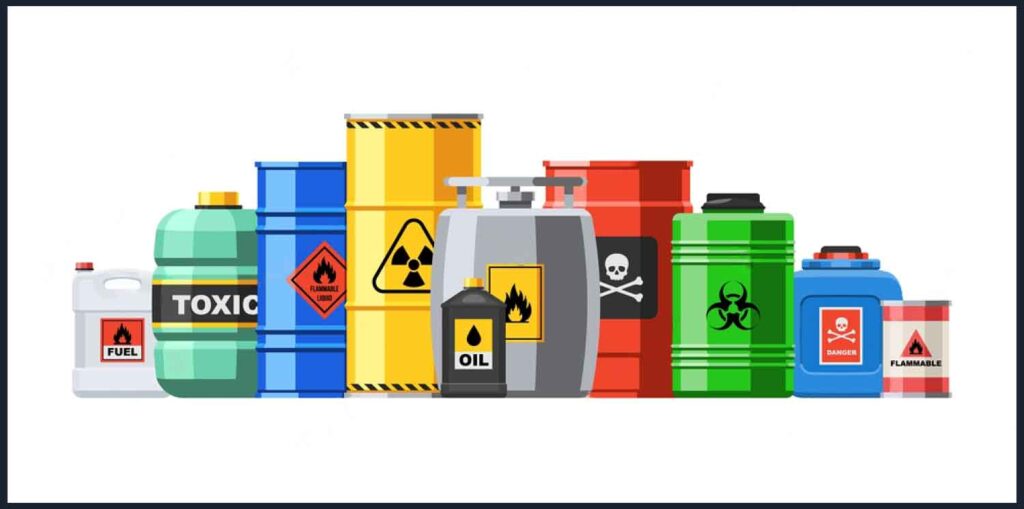
What is Dangerous Goods Transportation, How Is It Done?
Substances classified as dangerous goods have increasingly become a common topic within the logistics and transportation sector. As a result, with the development of technology, the transportation and logistics of dangerous goods using certain appropriate methods have become feasible. Logistics companies that perform transportation take precautions against potential disasters, explosions, and environmental pollution that may arise from these substances. Thanks to these measures, they provide transportation and logistics services for dangerous goods.
How Are Dangerous Goods Transported?
It is important that the logistics company you choose can provide transportation of dangerous goods as safely and carefully as possible, away from danger. Therefore, in the transportation sector, if a substance is classified as dangerous, it is also called dangerous goods transportation, which involves transporting flammable, explosive, or environmentally hazardous substances.
The logistics company performing dangerous goods transportation must have the highest level of attention and safety standards. When performing this process, it is extremely important that the chosen logistics vehicles are large and equipped with the highest security systems to ensure safety throughout the transportation of dangerous goods. This will increase the safety of the transported material and also improve the efficiency of the driver’s work.

Logistics Companies and Dangerous Goods Transportation
For the sustainability of daily factory production and manufacturing processes, the transportation of dangerous goods through logistics services has become essential. Additionally, large cities and industrial facilities have led the development of dangerous goods transportation by proposing waste disposal and recycling options, which require compliance with strict rules. These dangerous goods are transported only within the rules that must be followed, not optionally.
Codes for the Transportation of Dangerous Goods
Dangerous goods are classified into different types based on their codes. These include explosives, gases, various liquids, flammable substances, oxidizing substances, infectious substances containing microbes, corrosive substances, and many other dangerous materials. In total, dangerous goods are identified with 9 different codes.
Along with the transportation of dangerous goods, the chosen transportation method also carries the risk of polluting road or sea routes. This dangerous goods transportation, carried out in different parts of the world, can be transported via various routes. For example, a dangerous good transported by road can continue to be transported by sea or rail after a certain part of the journey.
Dangerous Goods
- Oxidizing substances
- Explosive, flammable liquids and solids
- Gases
- Chemically corrosive substances
- Radioactive materials
- Infectious substances containing microbes and toxins
Which Transportation Method Should Be Preferred?
Although companies prefer road, sea, and rail transportation due to their affordable prices, each carries some risk. Just as driving in traffic involves risk, transporting dangerous goods also involves risk. The only fully risk-free method is air transportation. Globally, carrying dangerous goods by air is widely accepted and viewed positively.
You can visit our page for more information about our road transportation services!
Companies Performing Dangerous Goods Transportation
Companies that transport dangerous goods must pay attention to certain issues before providing their services. One of these is ADR agreement. This agreement is a treaty adopted by European countries for transporting dangerous goods by road. Thanks to this ADR agreement, companies performing dangerous goods transportation must pay maximum attention to safety measures. It ensures trust between the person requesting the transportation and the company performing the dangerous goods transport.
According to the regulations regarding the transportation of dangerous goods, they must be protected with appropriate packaging during transit. To prevent issues such as leaks or spills along the route, packages with UN approval should be preferred. Companies transporting dangerous goods must strictly adhere to the specified safety precautions.
Documents Required for Dangerous Goods Transportation
The documents required for dangerous goods transportation are specified by law, and all companies and logistics firms involved in such transportation must possess these documents. Otherwise, they cannot legally perform dangerous goods transportation. These include the Material Safety Data Sheet (MSDS), dangerous goods request, dangerous notification, transport emergency card, dangerous goods request, transport emergency card, and TREM card, which are necessary for carrying out dangerous goods transportation.
Transportation of dangerous goods is a highly regulated activity with strict rules and regulations aimed at ensuring the safety of people and property. Companies involved in this activity must comply with strict guidelines, including obtaining the correct documents before transporting any dangerous substance. This includes having an appropriate Dangerous Goods Safety Advisor (DGSA) certification and acquiring all relevant documents for transportation. Additionally, companies must ensure that their drivers are sufficiently trained to handle dangerous goods safely.
As the demand for the safe transportation of dangerous goods increases, the need for reliable companies capable of providing such services is growing day by day. These companies should be knowledgeable about the legal requirements of such transportation and ensure that all necessary documents are obtained before any shipment.
Interested? Why Should You Prefer Road Transportation?



